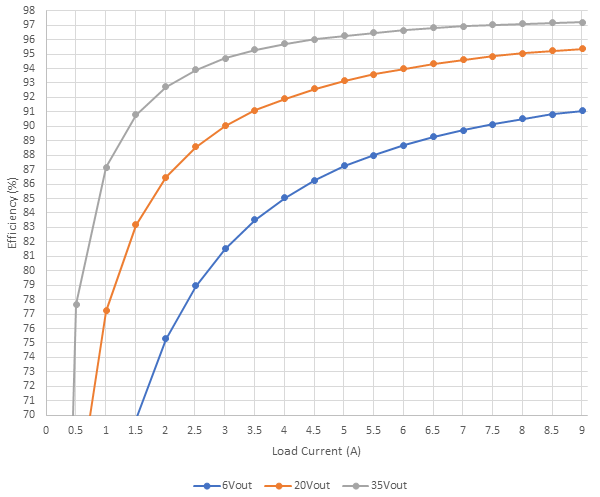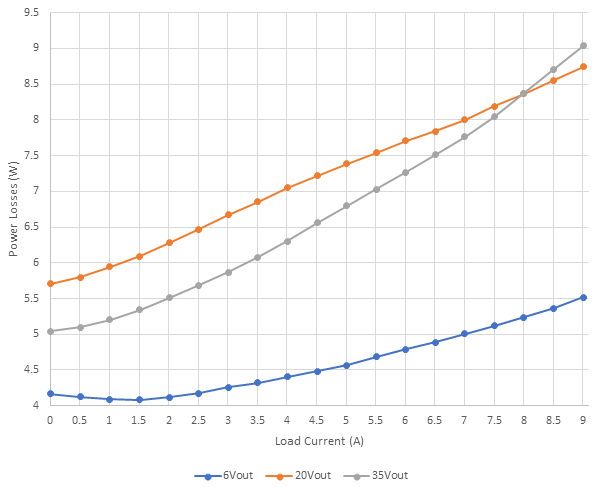TIDT412A October 2024 – November 2024
2.1 Efficiency Graphs
The efficiency and associated power losses of the system are shown in Figure 2-1 and Figure 2-2 respectively. These measurements were taken with an input voltage of 48V across the output voltage range and up to the expected nominal load (7A).
According to Figure 2-1, when operating at the nominal load of 7A, the efficiency can range from 90%, when the output voltage is 6V, to 97%, when the output voltage is 35V. The peak efficiency measured is 97.2% with an output voltage of 35V and a load of 9A.
 Figure 2-1 Efficiency at 6, 20, and
35VOUT from 0A to 9A
Figure 2-1 Efficiency at 6, 20, and
35VOUT from 0A to 9AAccording to Figure 2-2, when operating at the nominal load of 7A, the expected power losses range from 5W, when the output voltage is 6V; to 8W, when the output voltage is 20V. This can be compared to the no load losses that range from 4.25W, when the output voltage is 6V; to 5.75W, when the output voltage is 20V.
 Figure 2-2 Power Losses at 6, 20, and
35VOUT from 0A to 9A
Figure 2-2 Power Losses at 6, 20, and
35VOUT from 0A to 9A